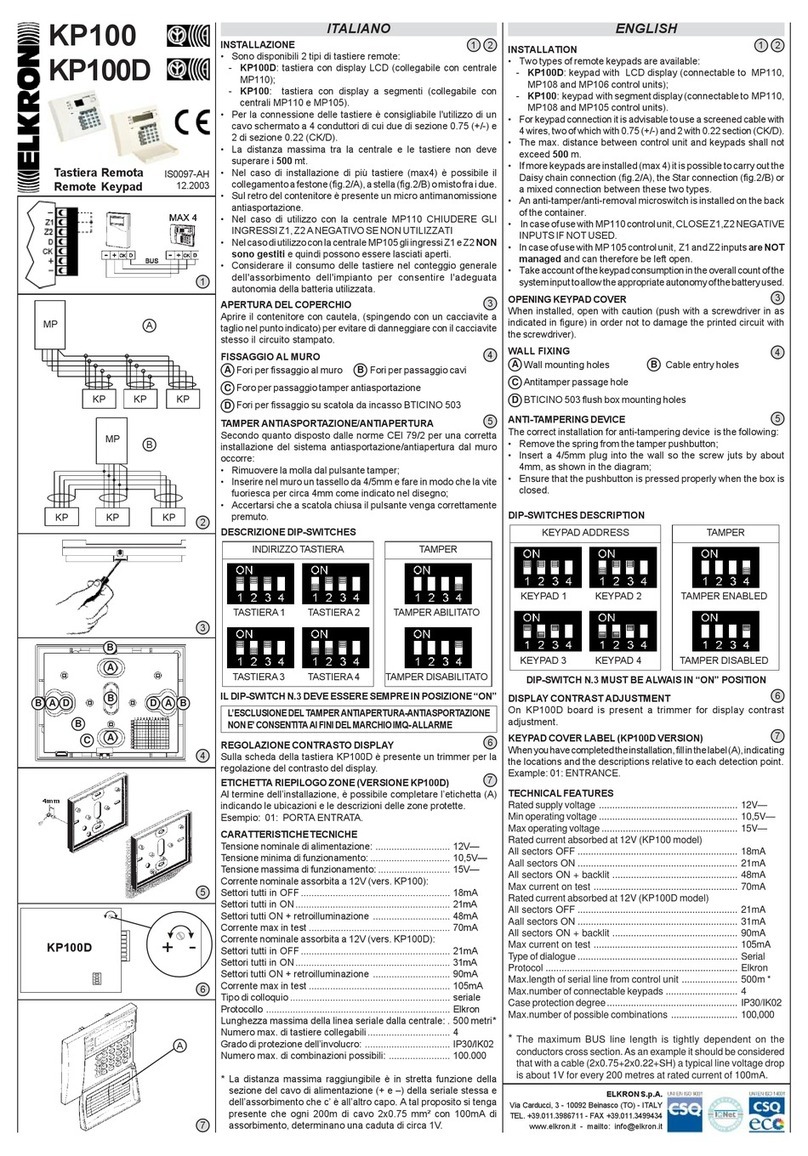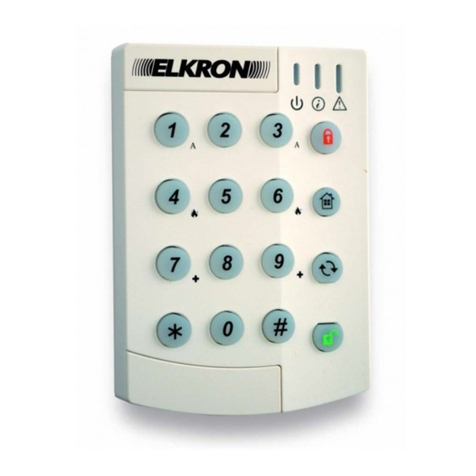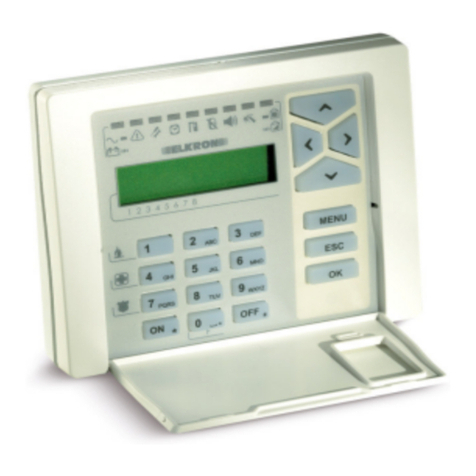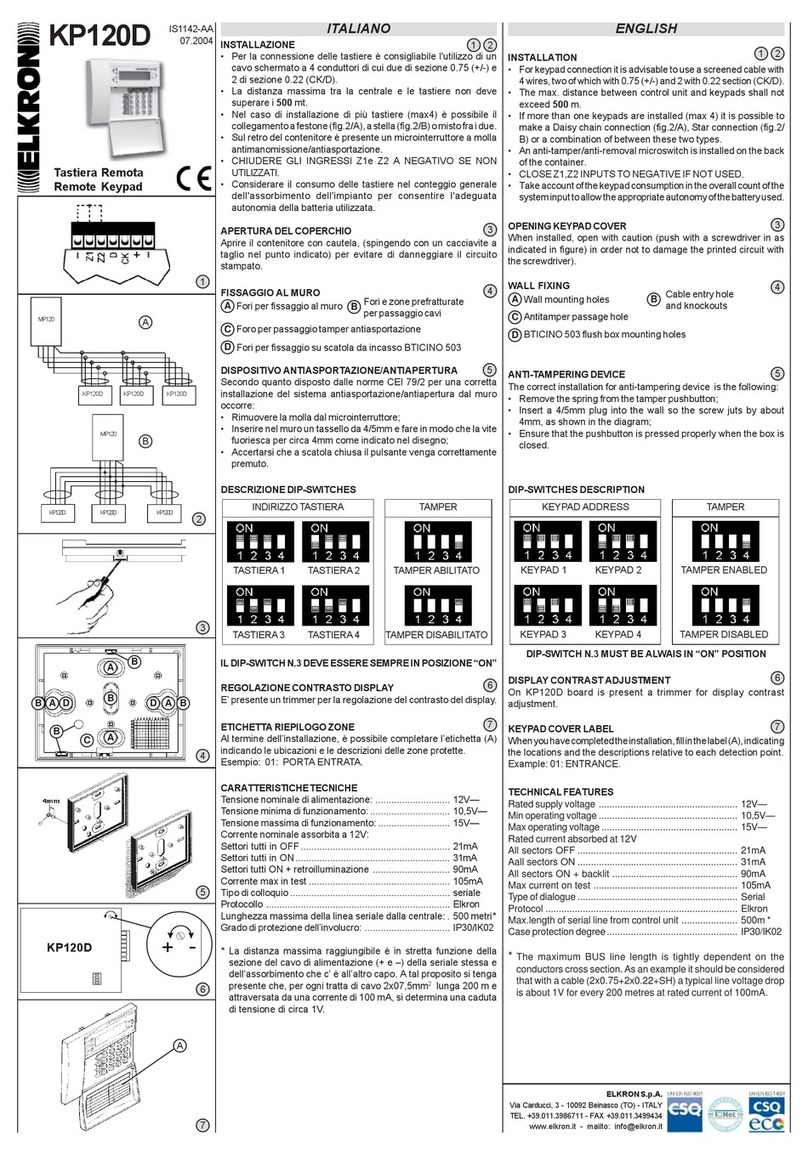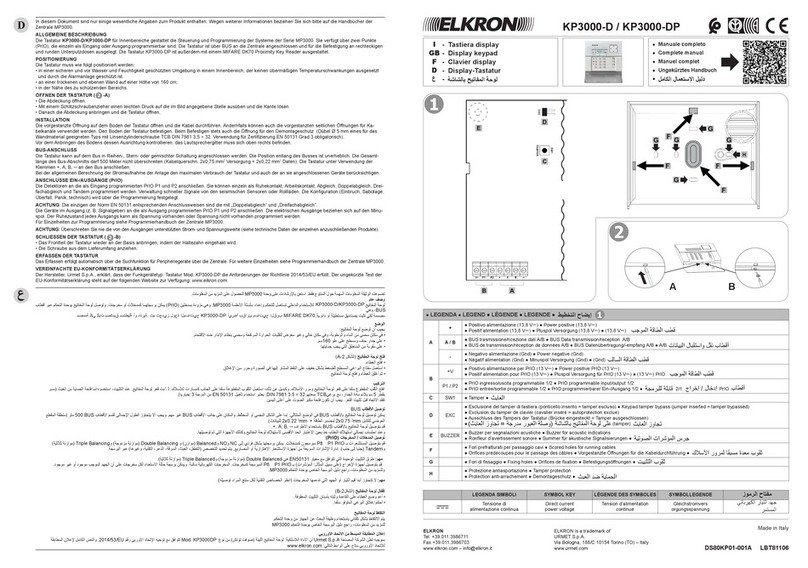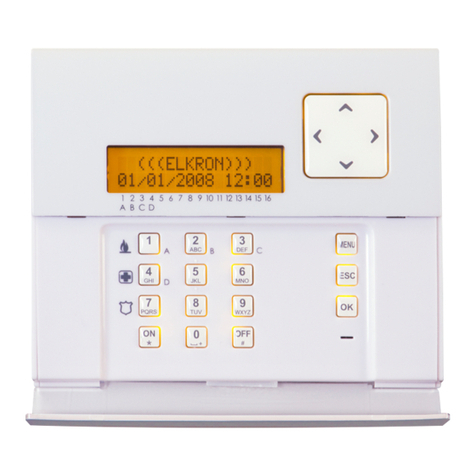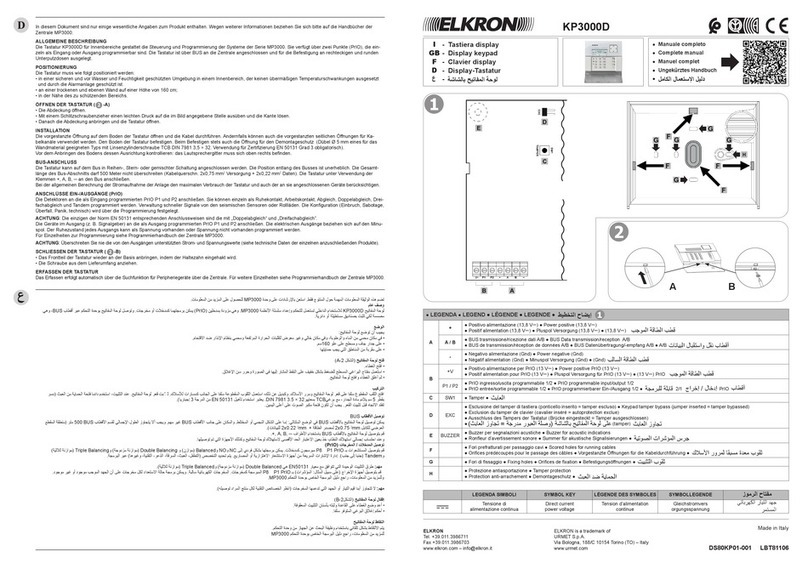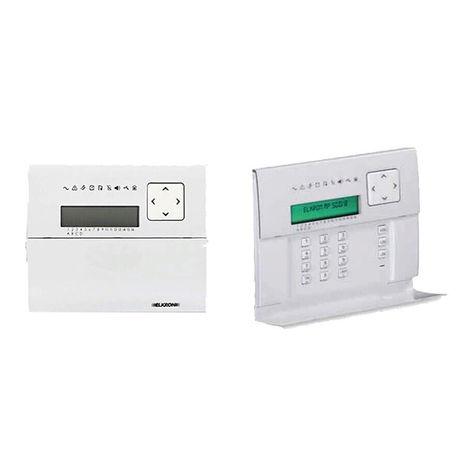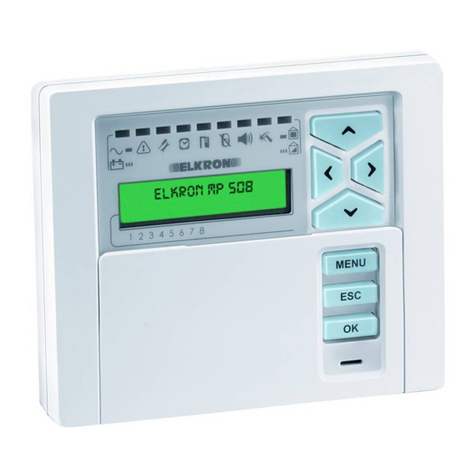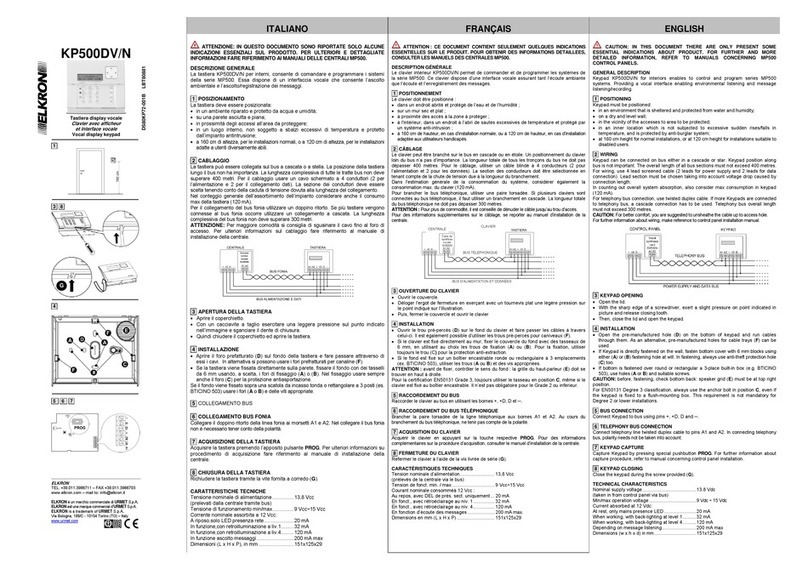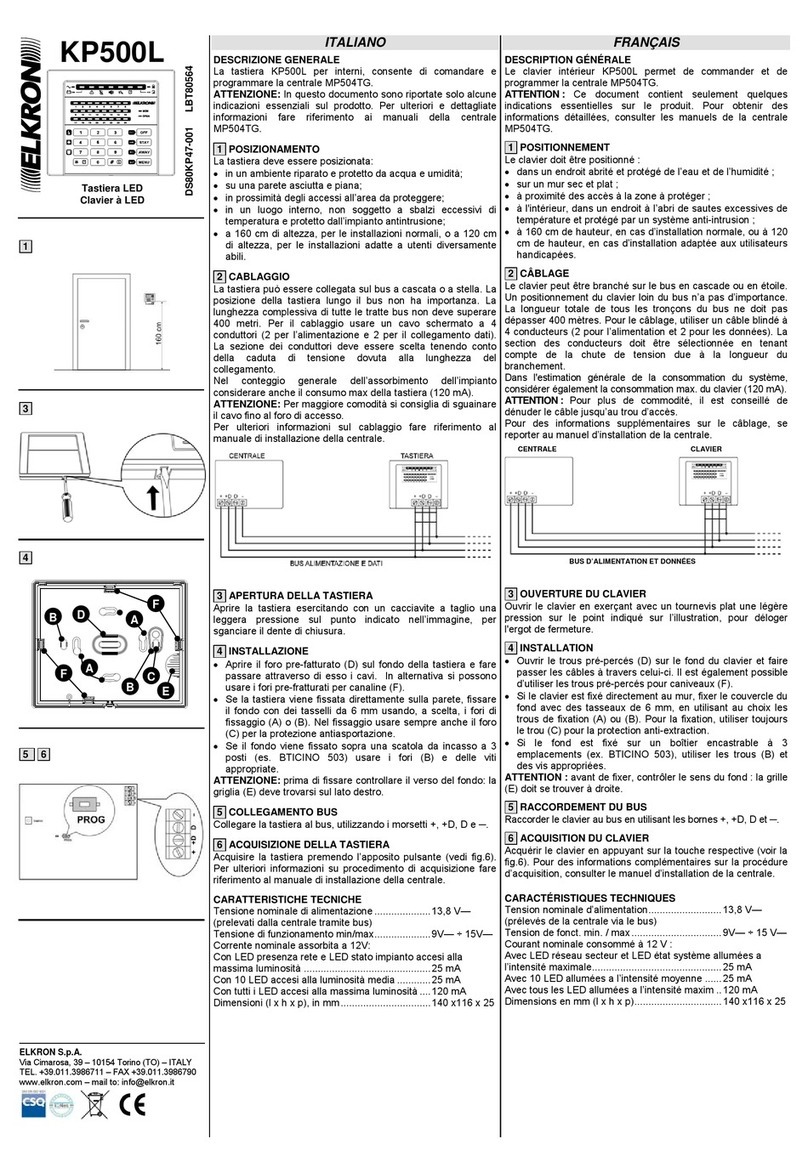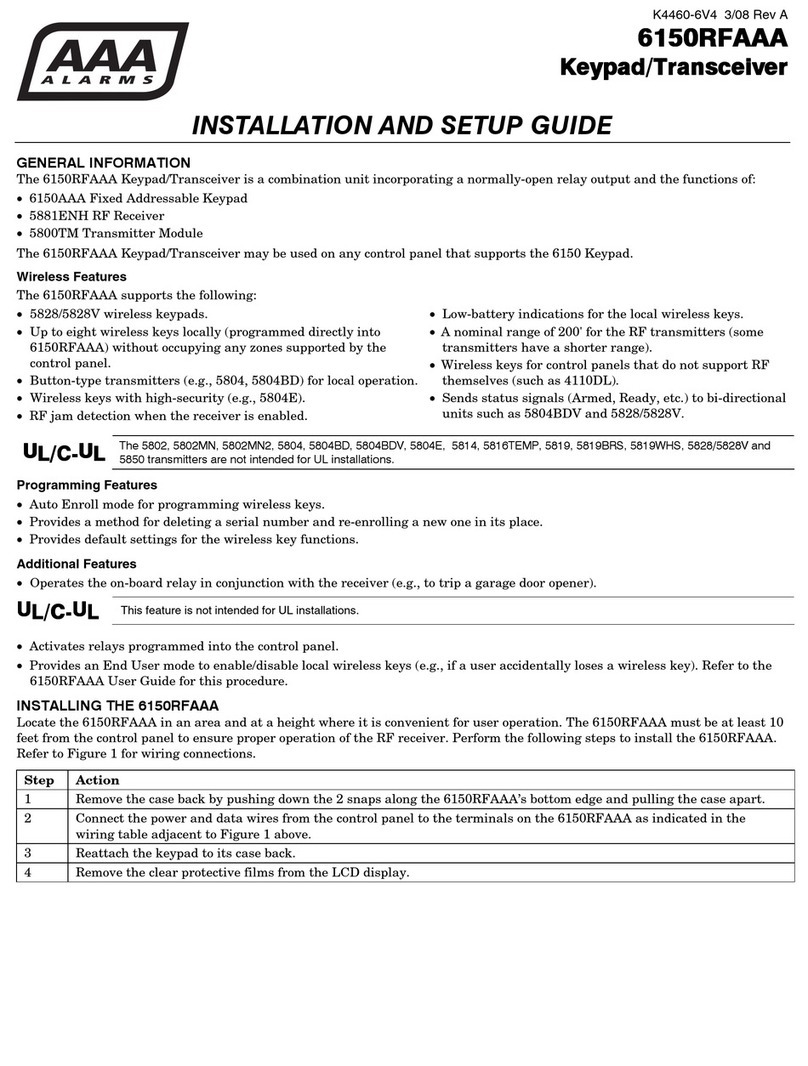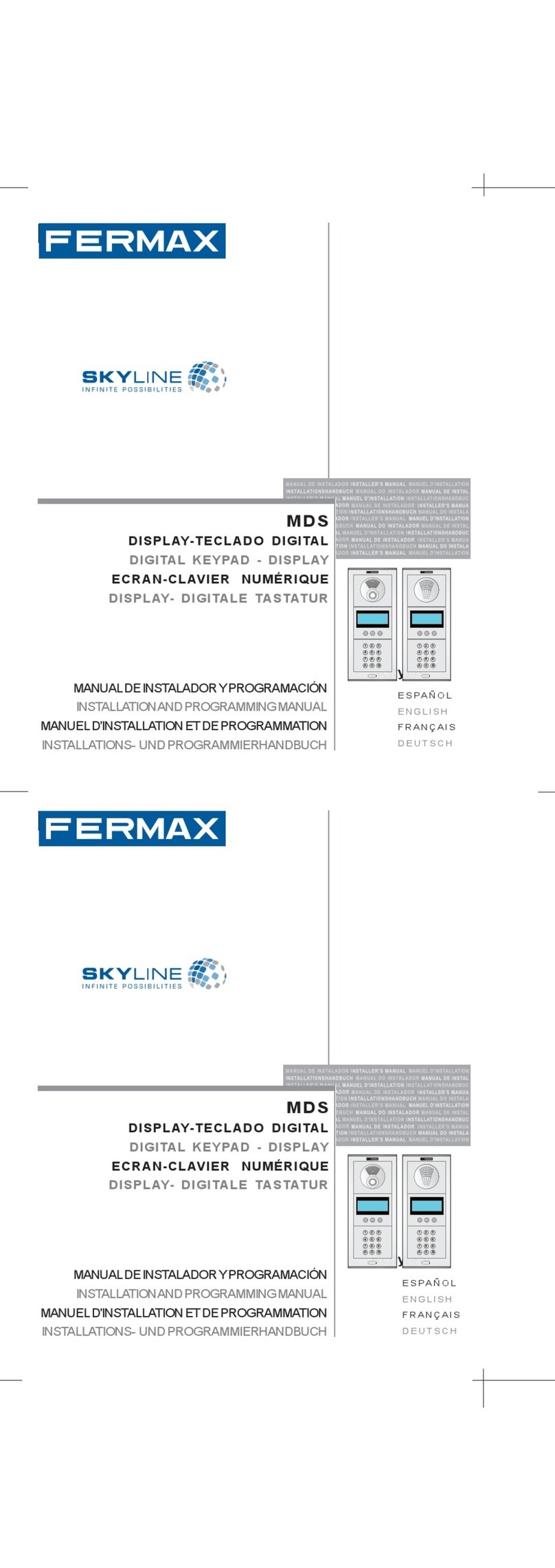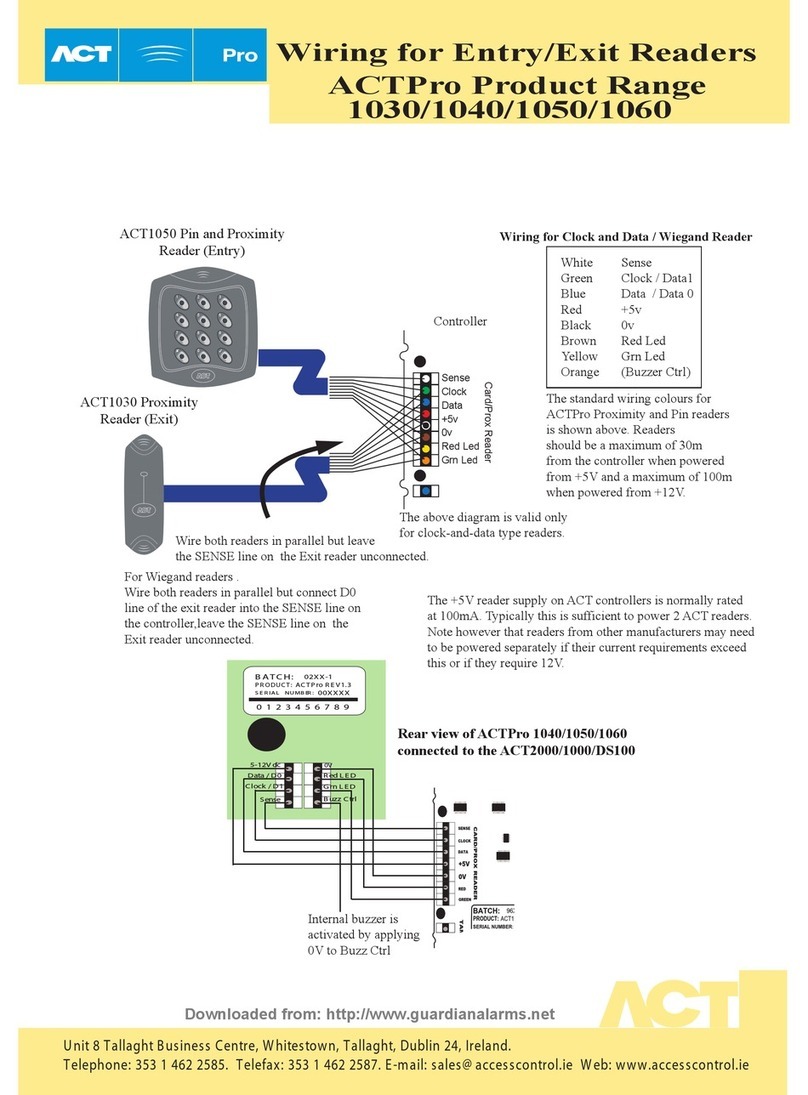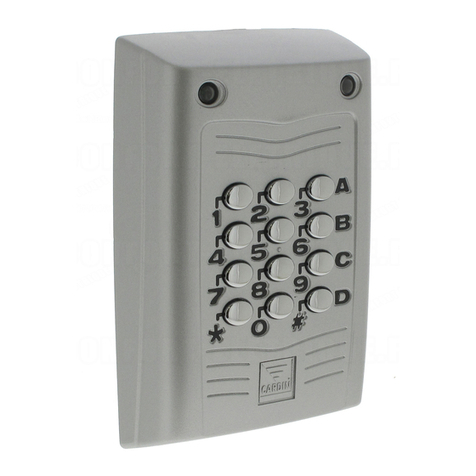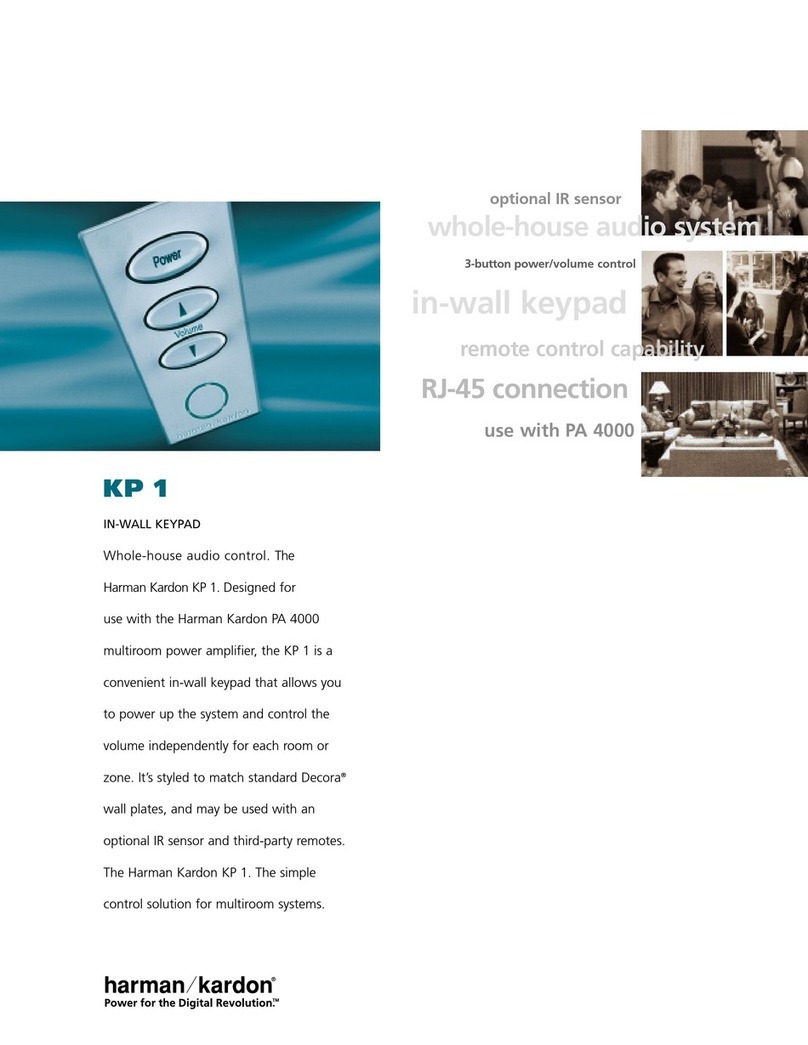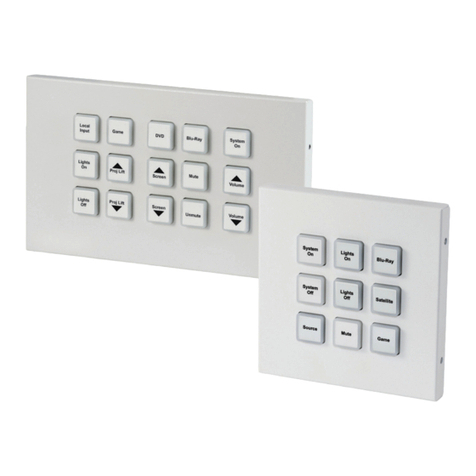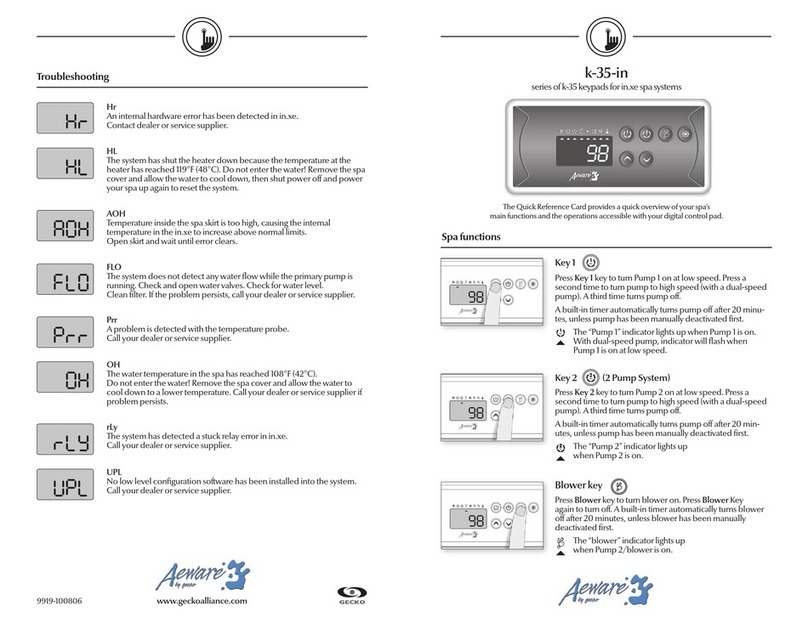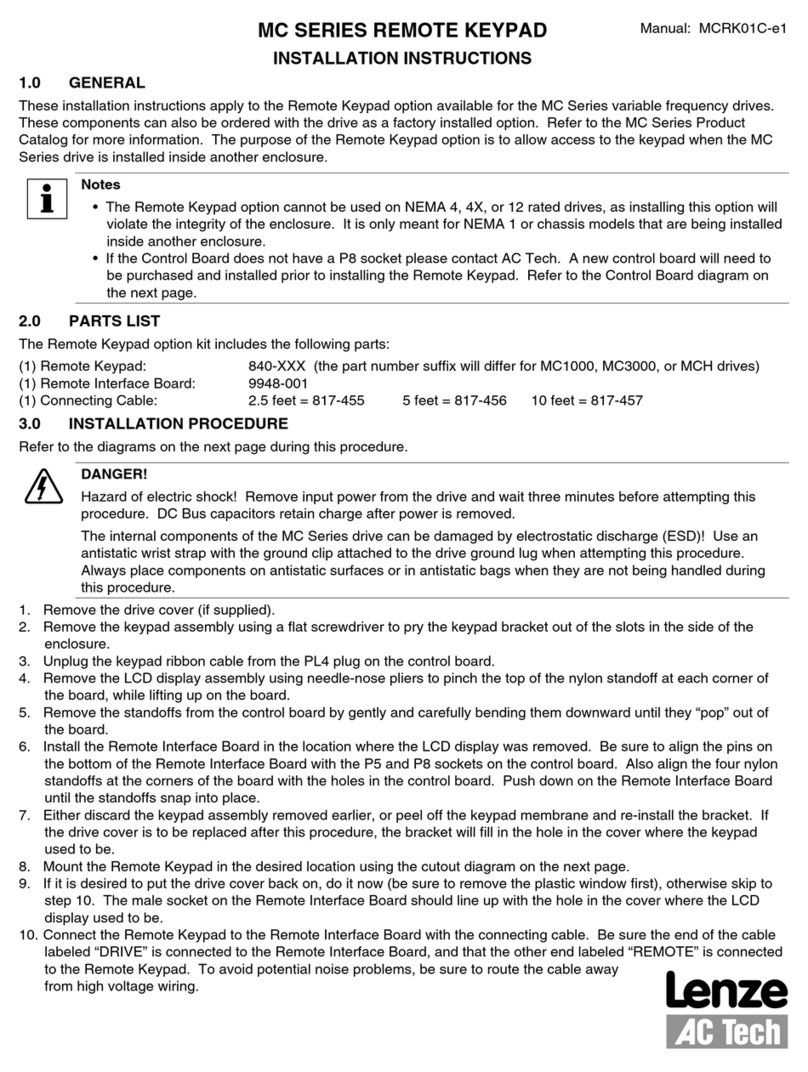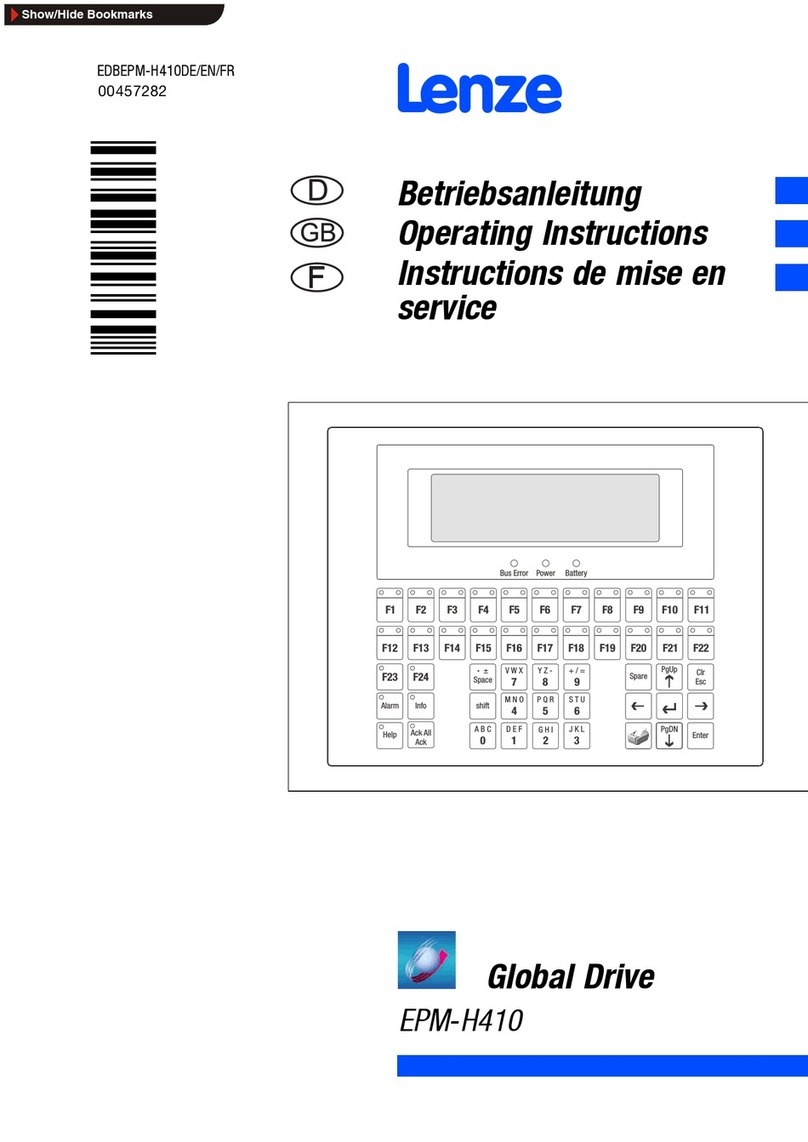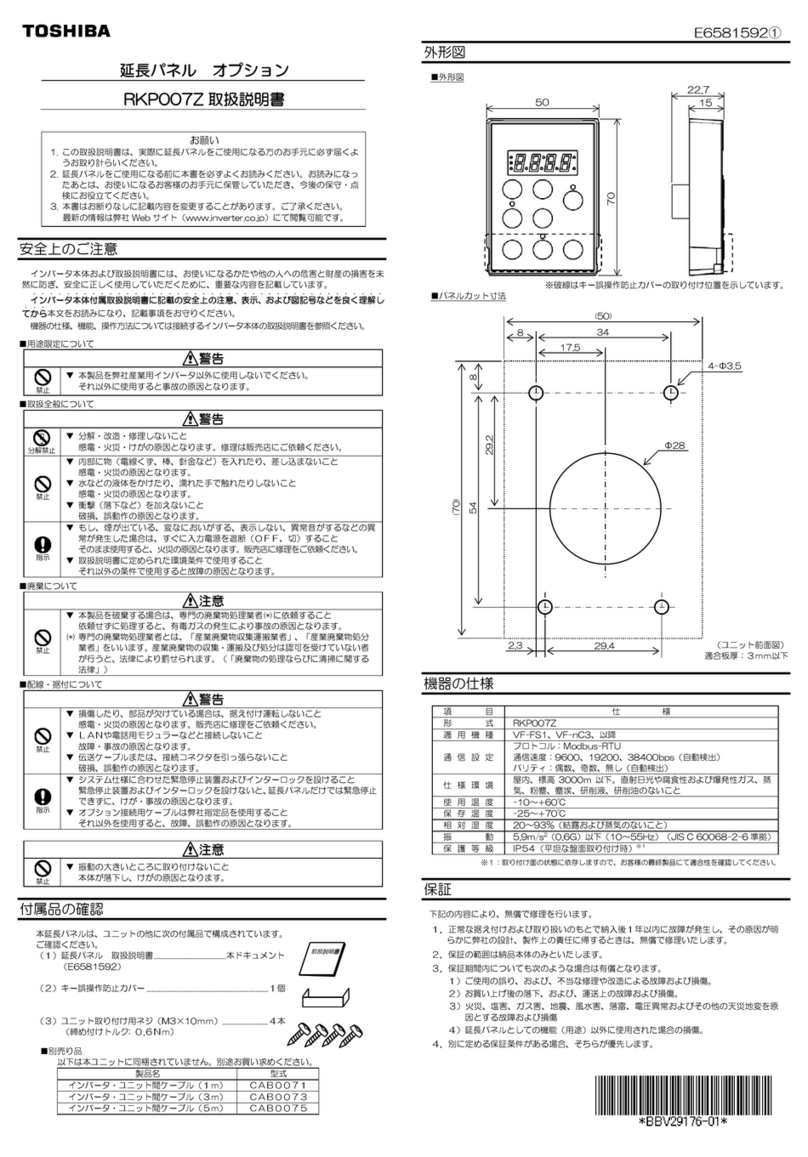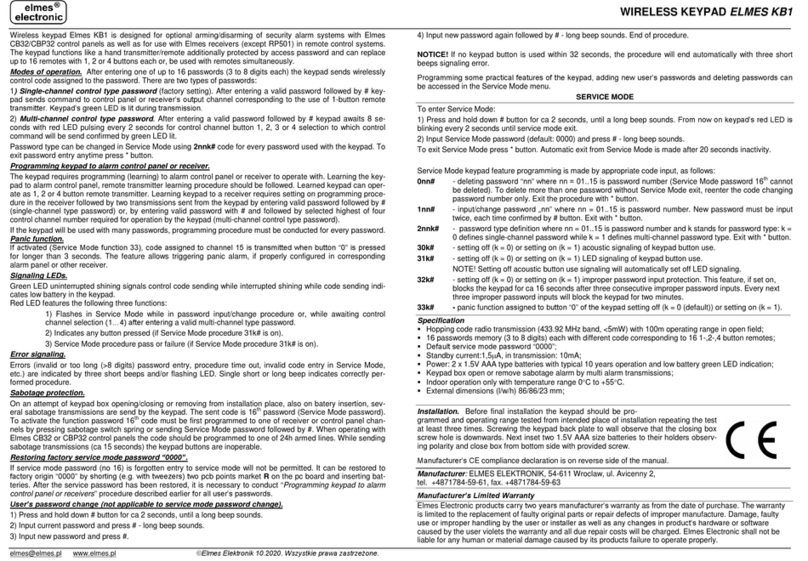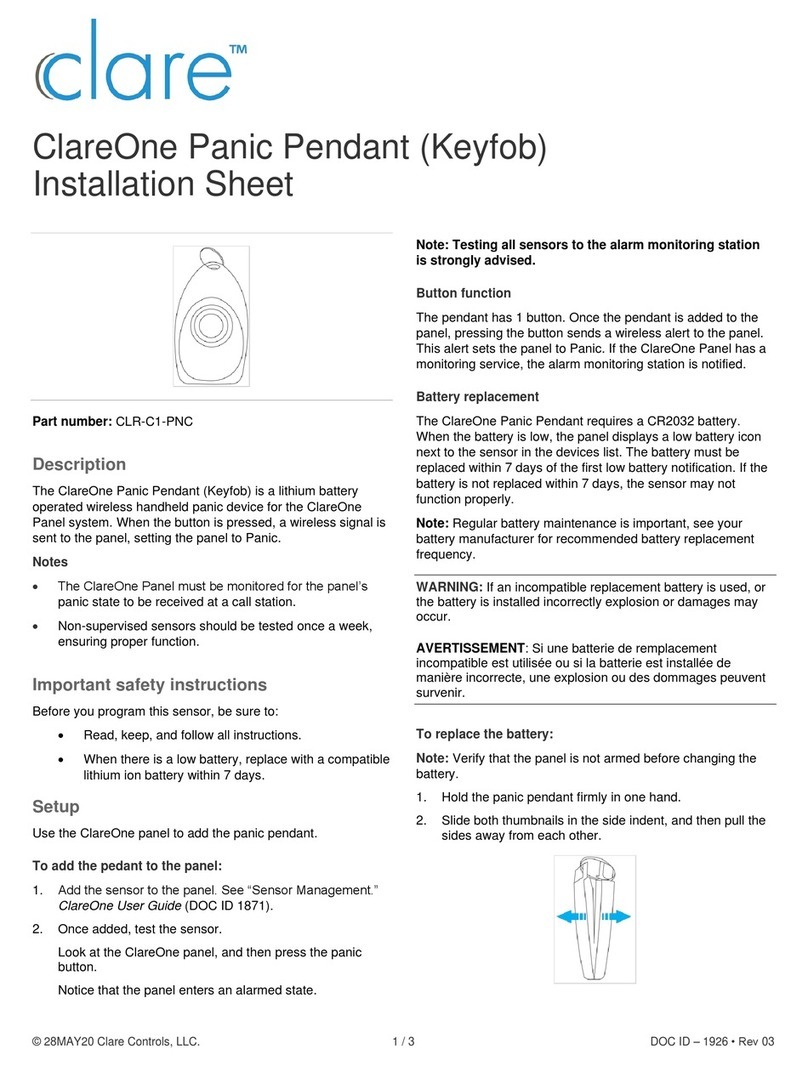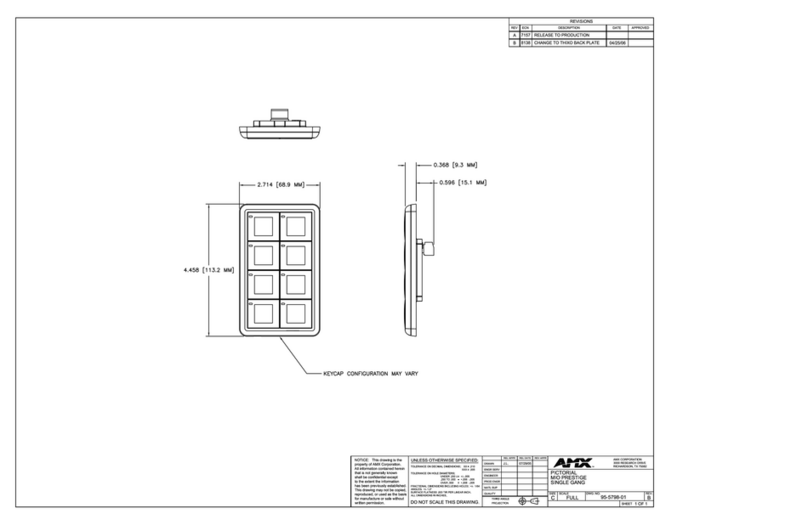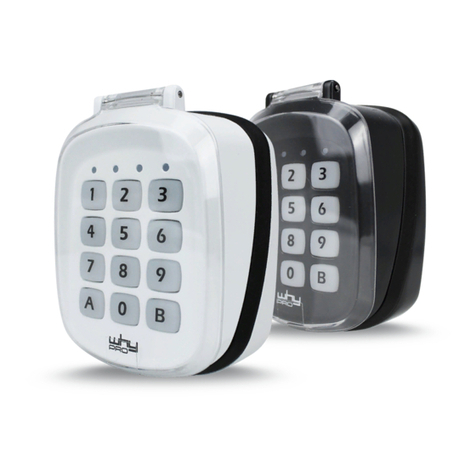
4 DS80KP55-001C
III. Se l’unità di controllo riceve i dati per l’apprendimento, saranno mostrate le relative informazioni. Fare
riferimento al manuale operativo della unità di controllo per completare la procedura di apprendimento.
IV. Dopo aver ricevuto il segnale dalla tastiera remota, l’unità di controllo invierà una conferma alla tastiera
remota. La tastiera remota emetterà 3 beep come conferma di avvenuta ricezione della convalida.
Apprendimento con doppio tasto:
I. In modalità funzionamento normale, premere insieme i tasti #e *. La tastiera remota emette un beep lungo.
<
<N
NO
OT
TA
A>
>
Se la tastiera remota non emette un beep lungo, significa che non ha inviato alcun dato di apprendimento
alla unità di controllo; per inviare i dati per l’apprendimento premere nuovamente insieme i tasti # e *.
II. Se l’unità di controllo riceve i dati per l’apprendimento, saranno mostrate le relative informazioni. Fare
riferimento al manuale operativo della unità di controllo per completare la procedura di apprendimento.
III. Dopo aver ricevuto i dati dalla tastiera remota, l’unità di controllo invierà una conferma alla tastiera remota
stessa. La tastiera remota emetterà 3 beep come conferma di avvenuta ricezione della convalida.
<
<N
NO
OT
TA
A
I
IM
MP
PO
OR
RT
TA
AN
NT
TE
E>
>
Se la tastiera remota non emette 3 beep, eseguire nuovamente la procedura di apprendimento.
Passo 3: Una volta appresa la tastiera remota, impostare nella unità di controllo la modalità Walk Test, mantenere la
tastiera remota nella posizione desiderata e inviare i dati per l’apprendimento alla unità di controllo per verificare
che si trovi all’interno della portata del segnale della unità di controllo. Per inviare i dati per l’apprendimento,
premere il tasto *e poi il tasto 7in modalità Test, oppure premere contemporaneamente i tasti # e *in modalità
di funzionamento normale.
Passo 4: Una volta verificato il corretto funzionamento della tastiera remota nella posizione scelta, procedere con
l'installazione seguendo la procedura descritta di seguito (fare riferimento al Montaggio della tastiera remota).
Passo 5: Modificare, se necessario, il codice locale per accedere alla modalità test:
I. Con la tastiera in modalità Test, premere il tasto *e poi il tasto 6: la tastiera emetterà un beep lungo.
II. Digitare 0000 (codice di default).
III. Premere il tasto : la tastiera remota emetterà un beep lungo.
IV. Digitare il nuovo codice di 4 cifre.
V. Premere il tasto #: la tastiera remota emetterà un beep lungo. Il nuovo codice è abilitato.
Passo 6: Premere due volte il tasto per uscire dalla modalità Test e completare l’installazione.
M
Mo
on
nt
ta
ag
gg
gi
io
o
d
de
el
ll
la
a
t
ta
as
st
ti
ie
er
ra
a
r
re
em
mo
ot
ta
a
Per montare la tastiera remota:
I. Rimuovere il coperchio frontale.
II. Utilizzando i 2 fori di montaggio del coperchio posteriore come dima, marcare la posizione dei fori nella posizione più
adeguata.
III. Inserire i tasselli se si esegue il fissaggio su intonaco o mattoni.
IV. Avvitare la tastiera remota ai tasselli.
V. Richiudere il coperchio frontale.
C
Co
om
me
e
i
im
mp
po
os
st
ta
ar
re
e
l
le
e
m
mo
od
da
al
li
it
tà
à
d
di
i
f
fu
un
nz
zi
io
on
na
am
me
en
nt
to
o
È possibile abilitare l’attivazione con o senza l'utilizzo del codice utente.
Attivazione con codice utente (impostazione di fabbrica = 1234)
In modalità Test, premere il tasto *e poi il tasto 9 per abilitare la attivazione mediante codice utente (default).
Attivazione Totale: digitare un codice utente e premere il tasto . Se non ci sono state anomalie e l’attivazione è
andata a buon fine, il LED rosso di stato sistema si accenderà e la tastiera emetterà un beep lungo.
Attivazione Parziale: digitare un codice utente e premere il tasto . Se non ci sono state anomalie e
l’attivazione è andata a buon fine, il LED rosso di stato sistema lampeggerà 4 volte e la tastiera emetterà 3 beep.
Disattivazione: digitare un codice utente e premere il tasto . Se la disattivazione è andata a buon fine, il LED
blu stato sistema si accenderà e la tastiera emetterà 2 beep.
Attivazione senza codice utente
In modalità Test, premere il tasto * e poi il tasto 8 per abilitare l’attivazione senza codice utente.
Attivazione Totale: premere il tasto . Se non ci sono state anomalie e l’attivazione è andata a buon fine, il LED
rosso di stato sistema si accenderà e la tastiera emetterà un beep lungo.
Attivazione Parziale: premere il tasto . Se non ci sono state anomalie e l’attivazione è andata a buon fine, il
LED rosso di stato sistema lampeggerà 4 volte e la tastiera emetterà 3 beep.
Disattivazione: digitare un codice utente e premere il tasto . Se la disattivazione è andata a buon fine, il LED
blu stato sistema si accenderà e la tastiera emetterà 2 beep.
Allarme antipanico
Premere contemporaneamente i tasti 1 e 3 per attivare l’allarme antipanico. Per disattivarlo premere il codice
utente.
<
<N
NO
OT
TA
A>
>
Nella configurazione di default, l’allarme antipanico è disabilitato.

